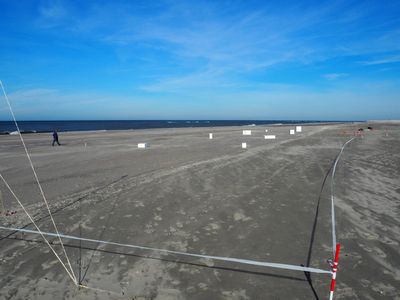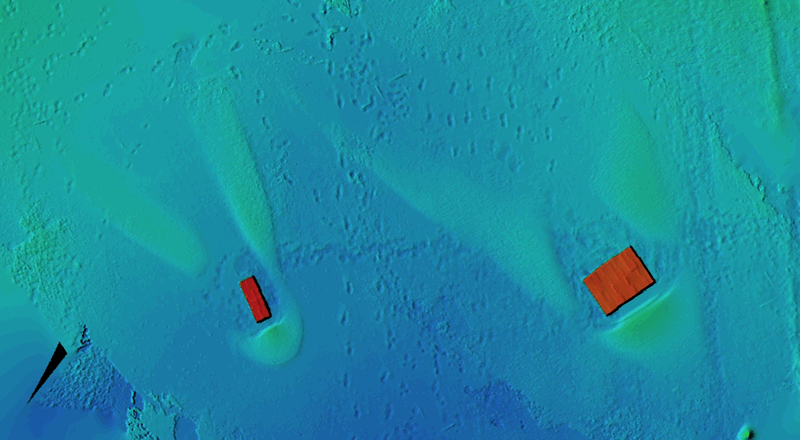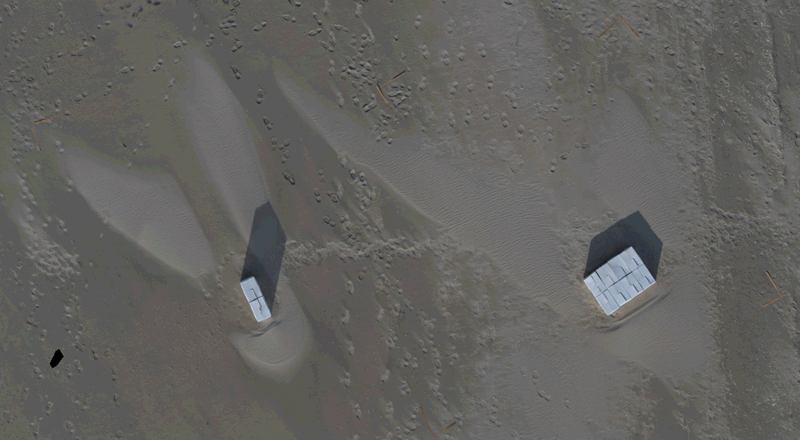D.W. Poppema1*, K.M. Wijnberg1, J.P.M. Mulder1 and S.J.M.H. Hulscher1
1 University of Twente, *This email address is being protected from spambots. You need JavaScript enabled to view it.
Introduction
Dunes provide protection against flooding and a high ground to live on. At the same time, the beach and dunes form an attractive area for recreation. This leads to the presence of buildings like restaurants and (holiday) homes at the land-sea interface. These buildings affect wind-driven sand transport and thereby shape the development of the dunes. Currently, there is an increasing demand for sea-side buildings on the beach and a lack of knowledge on the effect they have on the beach-dune system. Therefore, this research aims to understand the effect of buildings at the beach-dune interface on sediment transport and beach-dune morphology. In this contribution, we focus on determining the erosion and deposition patterns around buildings, using scale experiments on the beach.
Methodology
Scale models of buildings were constructed by stacking cardboard boxes into cuboid bodies of various sizes and shapes. During the experiment, the wind speed and direction were recorded, as well as the occurrence of sand transport at different elevations above the bed. The sedimentation and erosion patterns around the objects were measured using structure-from-motion photogrammetry. All around the models, photos were taken from a height of approximately 5 metres. These photos were computationally combined to form a digital elevation model (DEM) and orthophoto (a distortion-free top view).
Results and outlook
The experiments, conducted in Autumn 2018 at the Sand Motor in The Netherlands, suggested that the building width and height are more important than the length parallel to the wind. Further processing of the data is needed to determine the sedimentation and erosion patterns around buildings in a more quantitative manner and describe the dependency on building size and shape. In addition, the experiments will provide insight on how small the scale models can be for further experiments using configurations of multiple objects. Smaller scale models allow for more flexibility, but can potentially introduce scaling effects or change the physical processes. Therefore, a middle ground has to be found, that balances small-scale flexibility and full-scale representativeness of real-world effects.

Figure 1: Photo of one of the set-ups, testing the effect of building width and height in October 2018


Figure 2: Digital elevation model (left) and orthophoto (right) of the sedimentation pattern around two of the models in figure 1. Model size 32x100x70 cm (left model) and 128x100x35 cm (right model).










